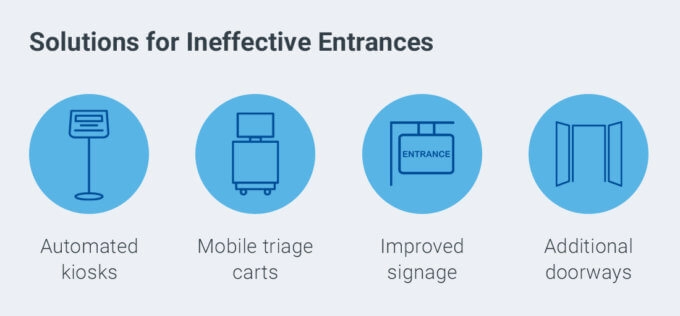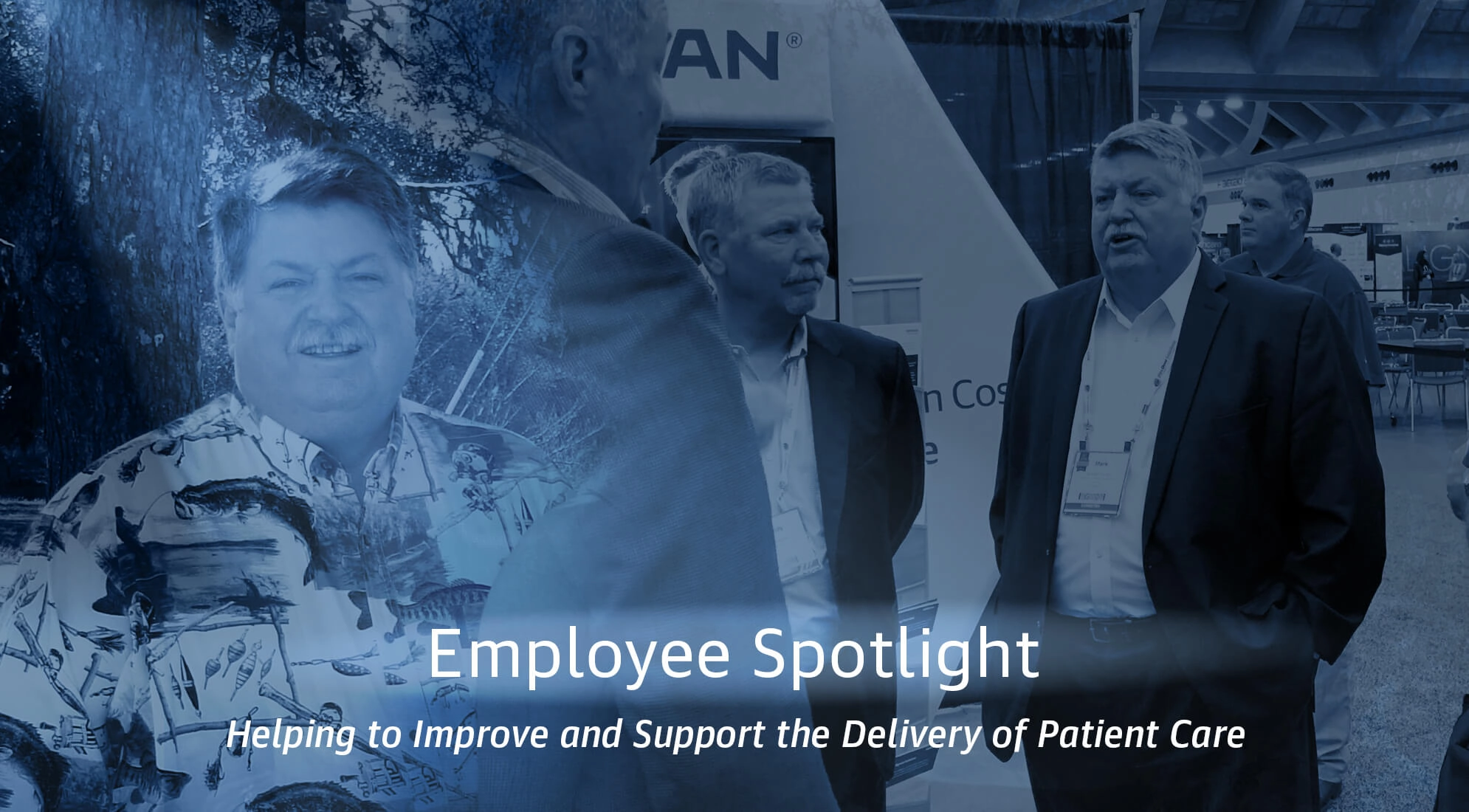It’s been more than a century since the last pandemic struck our nation. Through those 100 years, there have been outbreaks that have shaken and surprised our healthcare system, like AIDS, SARS and Ebola. But not since the influenza epidemic of 1918 have our hospitals been as overwhelmed and short-supplied as those in COVID-19 hotspots were earlier this year.
In the time since the influenza pandemic, healthcare practices and technologies have advanced much more than would have seemed possible at the time. But it’s difficult to build a healthcare system that’s fully prepared for something that hasn’t happened in so long. As any expert will tell you, the floors of modern hospitals are designed to deliver care for conditions common to modern life, and rightfully so. But the rise of the COVID-19 pandemic, a novel event in the annals of modern American life, has shed light on a key vulnerability in our current care delivery model: inefficient entrances.
With a second wave of the virus now sweeping across parts of the nation and hospitals in hotspot areas once again experiencing huge influxes of patients, it’s appropriate to look back on the first wave of infections to glean lessons and better prepare our hospitals. What risks can be identified with our facility entrances? And what can be done to address them?

Struggling on the Intake
Perhaps the most visible challenges healthcare providers faced, other than the well-documented shortage of PPE supplies, were related to facility entrances. News channels and online articles were filled with images of long lines of patients and visitors waiting to get inside hospitals. While it would be easy to assume that these lines were caused only by the drastic climb in COVID-19 cases, they were also symptoms of two other issues: unclear or inefficient triage points and comingled entrances for “sick” and “well” patients.
Triage points, when working as designed, spread the responsibility for patient intake across several staff teams. But pandemic conditions can turn triage points into bottlenecks or pinch points. Spikes in patient traffic can fill lobbies and make triage points harder for patients to identify or self-select, especially when these triage points are made using folding tables, which are not visible above head height. Contrast this to airlines, which have mastered the practice of clearly labeled triage points at boarding gates. With multiple signs marking each gate placed well above head height, travelers can easily find where they need to go.
An increased number of mobile triage sites can be added to balance out increased patient traffic, but mobile triages must be outfitted with technology hookups, a large stock of PPE and secure-access medical record and scheduling systems. Any drop in tech connectivity or shortage of necessary PPE can shut down a triage point and add to delays in patient throughput.
As the country searches for the new normal, it is critical for healthcare providers to have more informed data regarding the in-situ condition of their service line portfolio. Watch this webinar, presented in partnership with the American Hospital Association, to see how to identify potential facilities issues before the next national health crisis.
But before a patient ever reaches a triage point, they are facing health risks merely by standing in line. Often, entrances to hospitals have large, automated doors as a single point of entry. While these entrances serve to accommodate all types of patients during normal conditions, they limit the ability to regulate exposure for anyone in line by necessitating that all patients wait to enter through the same door. The result is that “sick” patients, or those who are potentially infected, are comingling with “well” patients.
Having staff at the door to screen patients for symptoms and direct them to the correct triage point accordingly can help separate sick and well patients and limit exposure. But so long as an intake area only has one way in from the outside world, sick and well patients will have to share spaces, decreasing the opportunity for social distancing and increasing the risk of transmission. Not to mention the health risks to screening staff, who would be working in close contact to potentially infected patients.
Smoothing out Patient Throughput
The good news is that, with a few modifications, the bottlenecks and hazards previously presented by entrances and triage points can be alleviated. For facilities that have multiple entrance doors that are spaced far enough apart to be considered properly socially distant, signage can be used to designate entrances for patients seeking attention for COVID-19 treatment and patients needing other treatment or visitors.
Facilities without well-spaced doors at entrances may need to consider directing traffic for COVID-19 patients to different entrance points, and designating those areas as COVID-19-only areas. This, too, will require effective signage in parking lots and on exterior walls to direct patients to their appropriate entrances before they reach the facility. If this approach seems too complicated, or a well-suited second entrance isn’t available, then the best approach is to construct a second doorway into the intake area. Quick facilities renovations like these can be completed in less time than one might think.
Entrances for both COVID-19 patients and non-COVID-19 patients can be equipped with automated temperature screening kiosks. These kiosks bring two key advantages for screening: First, and most importantly, they alleviate the risk of exposure for staff who would otherwise be screening at entrance points; And second, they speed up the screening process by simultaneously measuring and recording patient temperatures. As an added bonus, automated kiosks reduce the expenditure of PPE.
Once inside, mobile triage carts equipped with all necessary tech hookups, PPE supplies, sanitizing supplies and a plexiglass barrier can be the ideal alternative to other “mobile” triages built with folding tables. These carts will be more efficient, both because they contain their supplies and don’t need to be torn down, and because they’re truly mobile and can be easily repositioned if space becomes limited or traffic flows change. Try to mark mobile triages with signs that reach above head height, in order to make sure they are visible above a crowd of patients and visitors.
If, for any reason, samples need to be collected during the triage process, refrigerators should be positioned behind triage points. Having refrigerators present at triage points, rather than requiring staff to walk samples back to storage areas, makes the triage process more efficient. It also reduces the likelihood of triage points being left unattended and, therefore, open to HIPPA violations.
Expediting Facilities Updates During COVID-19
Making renovations and installations to facilities through traditional procurement methods can sometimes take longer than expected, especially in healthcare settings. But, for projects that require expedited timelines, like new doorways, or are smaller in scope, like updated signage, alternative project delivery methods can help speed up the process.
One particularly effective alternative method is Job Order Contracting, which allows owners to order construction services from a list of pre-priced tasks, much like ordering supplies from a catalog. The Job Order Contract and its list of pre-priced tasks last for multiple years, during which the owner can order an indefinite number of tasks from a contractor. Rather than building an entire contract to be negotiated for each project, owners can order subsequent tasks without negotiations, greatly reducing the time needed to procure renovation, maintenance or construction work. As an added benefit, preset pricing structure help keep costs controllable, since owners know what each task will cost up front.
The current pandemic is revealing new vulnerabilities in our medical system. Entrance points, being the first point of contact for patients, are especially important for creating efficient patient throughput and limiting exposure. By reestablishing and bolstering the patient intake process, we can help stem the spread of the virus at our healthcare facilities.







